In this post we will talk about how to fix a Windows 11 Blue Screen with a QR Code. When you encounter a Blue Screen of Death (BSOD) in Windows 11, you may see a QR code with the error message in the bottom-left corner of the screen. This code is designed to help you diagnose and troubleshoot the error more effectively.

What is the QR code on BSOD?
In older versions of Windows, the Blue Screens of Death used to be highly technical screens filled with cryptic information that was hard for the average user to understand. Starting with Windows 8, Microsoft redesigned the BSOD, featuring a simpler message followed by a basic error code. Later, with Windows 10, Microsoft added a QR Code to the blue screen to enable users to learn more about the error.
QR codes are still part of the BSOD screen and while they are meant to provide users with immediate access to a webpage containing more information and a troubleshooting guide tailored to the error, it actually takes you to a general Microsoft support page on troubleshooting blue screen errors, which is not error-specific and so of not much use.
Windows 11 Blue Screen with QR Code
If you encounter a Windows 11 Blue Screen with a QR Code, you can take these steps:
- Scan the QR Code
- Run the Blue Screen Troubleshooter
- Run Windows troubleshooting tools
- Update device drivers
- Perform a System Restore
- Reset or Reinstall Windows 11
Let us see this in detail.
1] Scan the QR Code
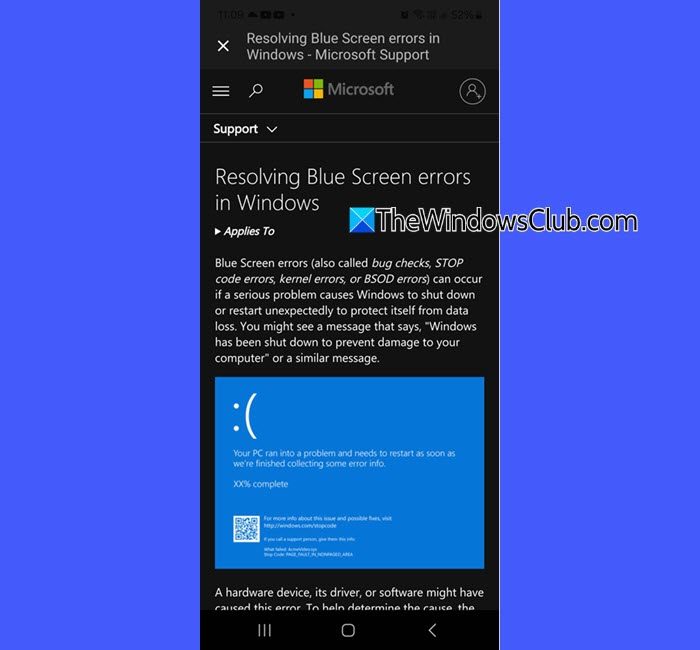
Open your smartphone’s camera app and point it at the QR code. If the app doesn’t support scanning QR codes, download and use a third-party QR code reader app. Upon scanning, your phone will detect the code and display a link. Click on the link to open it in your browser. It will direct you to the Microsoft support page. Try the troubleshooting tips listed on the page and see if they help.
If the solutions suggested by Microsoft do not resolve the BSOD, note down the specific error code or stop code on the screen (e.g., MEMORY_MANAGEMENT, REFS_FILE_SYSTEM, or CRITICAL_PROCESS_DIED) and use it to search for specific solutions online or in Microsoft’s support resources.
If you still don’t get enough details, use the advanced troubleshooting steps below.
2] Run the Blue Screen Troubleshooter
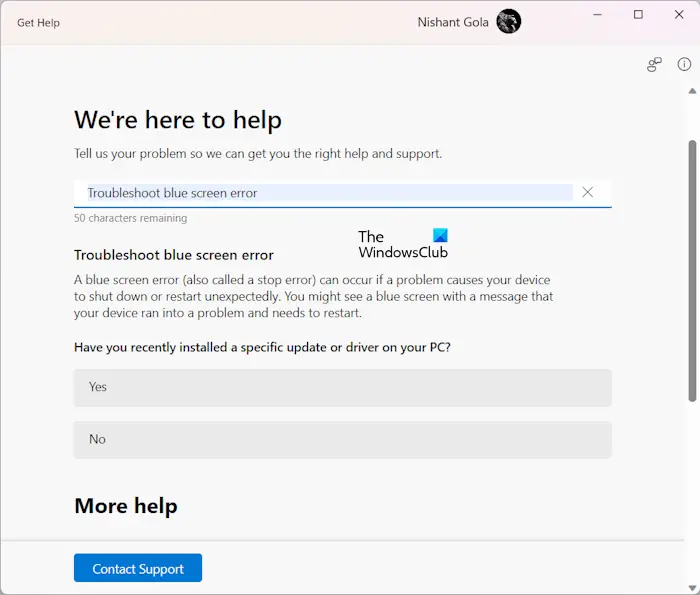
Open the Windows Search and type ‘get help’. Select the Get Help app from the search results. When the Get Help app opens, type ‘Troubleshoot BSOD error‘ or ‘Fix blue screen errors’ and press Enter.
The Blue Screen Troubleshooting wizard will guide you through the troubleshooting process. Try the suggested tips and see if they help.
3] Run Windows troubleshooting tools
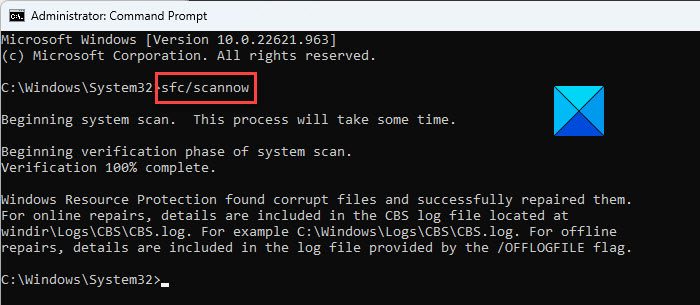
Microsoft Windows offers several built-in troubleshooting tools that can help resolve BSODs efficiently. For example, if the BSOD is caused by faulty RAM, the Memory Diagnostic tool can help diagnose and fix it.
If it is caused by disk errors (BSODs appearing with storage-related stop codes, such as KERNEL_DATA_INPAGE_ERROR), the CHKDSK utility might help.
Similarly, BSODs caused by corrupted system files can be fixed by running the System File Checker tool. For more complex issues, you may run the DISM tool to repair the Windows image.
4] Update device drivers
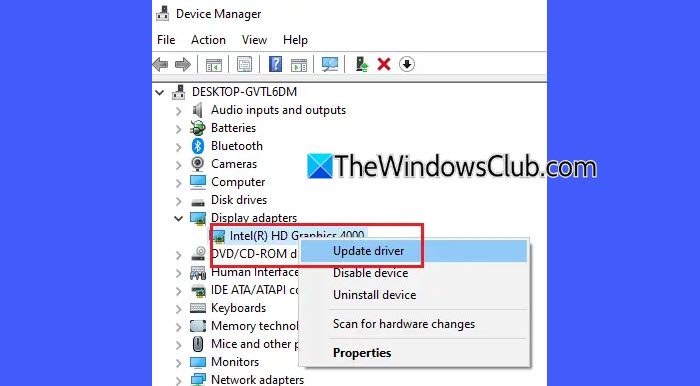
Defective, outdated, or incompatible drivers are one of the prime causes of most BSODs. Make sure you have the latest drivers installed on your system. If you have a stop code from the BSOD (such as VIDEO_TDR_FAILURE), use it as a hint to identify the specific driver. If there’s no clear indication of the device, updating the following drivers one by one can help isolate and resolve the issue:
- Graphics Card (GPU) Drivers
- Network Adapter Drivers
- Storage Drivers (SATA, AHCI, SSD)
- Chipset and Motherboard Drivers
- Audio Drivers
- USB and Peripheral Drivers
- BIOS/UEFI Firmware
5] Perform a System Restore
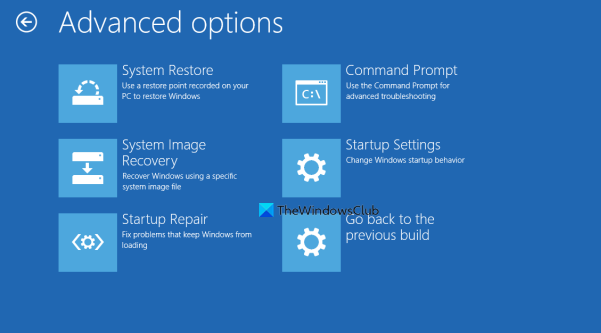
Next, try performing a system restore to return your system to a previous working state before the BSOD started occurring on your system. If you’re stuck in a BSOD loop and can’t get past it to access System Restore, you can still attempt System Restore through Windows Recovery Environment (WinRE).
6] Reset or Reinstall Windows 11
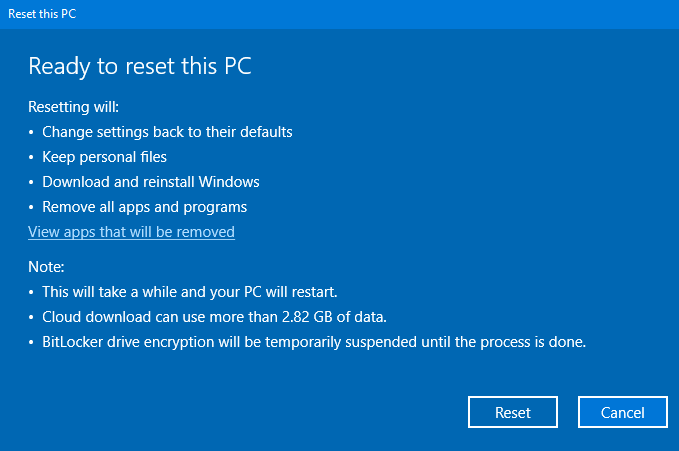
If nothing seems to help, you may have to reset or reinstall Windows as a last resort.
Go to Settings > System > Recovery and select Reset this PC. Choose ‘Keep my files‘ if you want to retain personal data, though you may need to reinstall apps.
I hope this helps.
Read: How to Recover Data after a Blue Screen of Death in Windows 11.
How do I fix the blue screen in Windows 11?
To fix a blue screen error in Windows, try running the online Blue Screen troubleshooter within the Get Help app. It is a built-in troubleshooter designed by Microsoft for specific assistance in resolving blue screen errors. If you see a QR code along with the error code, scan it to go to the Microsoft support page and follow the troubleshooting guidelines.
Read Next: How to find and view BSOD log files in Windows Event Viewer.
Leave a Reply